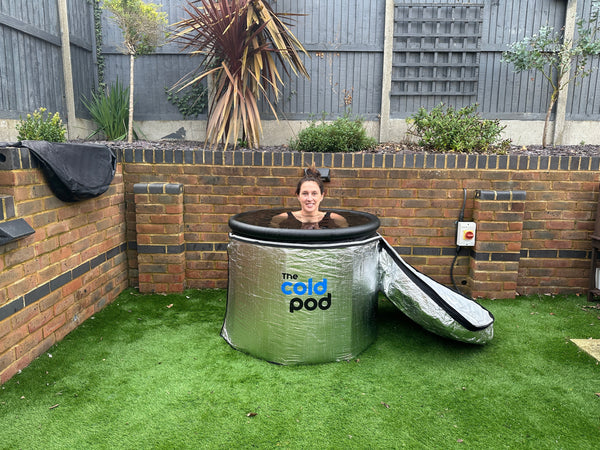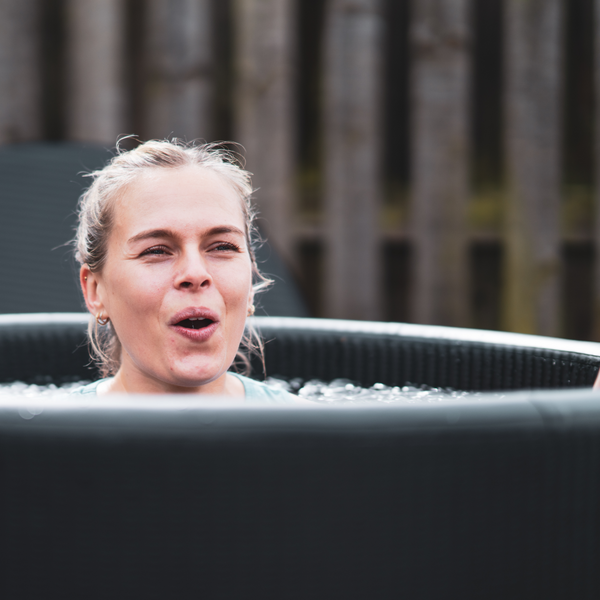Are you ready to take the plunge into the invigorating world of cold-water immersion? Picture yourself immersed in icy waters, feeling a rush of exhilaration and a surge of energy. Cold bathing has gained popularity for its numerous health benefits, but did you know that there’s a powerful ally that can enhance your experience even further? Enter breathwork – a practice that focuses on conscious breathing techniques.
The Science of Ice Bathing
Cold-water immersion is more than just a refreshing experience – it has a profound impact on our bodies at a physiological level. When we submerge ourselves in icy water, several fascinating processes take place. Firstly, the chilly temperature of the water causes our blood vessels to constrict, a mechanism known as vasoconstriction. This narrowing of blood vessels helps to redirect the blood flow towards our vital organs, ensuring their optimal functioning even in cold conditions.
Beyond vasoconstriction, cold dipping also stimulates our circulation. As our bodies are exposed to the cold, our heart rate increases, pumping more blood throughout our system. This increased circulation not only delivers oxygen and nutrients to our cells but also aids in the removal of metabolic waste products.
Moreover, it can have a positive effect on our metabolism. When we expose our bodies to cold water, they work harder to maintain a stable internal temperature, leading to an increase in metabolic rate. This boost in metabolism can contribute to improved energy expenditure and potentially support weight loss efforts.
Ice baths not only improve circulation and metabolism, but they have also been proved to strengthen our immune systems. White blood cells and other immune-related components are produced because of our immune system being activated by exposure to cold. This improved immune function can help us fend off infections and boost general health.
Scientific studies conducted in Britain have provided compelling evidence for the benefits of cold-water immersion on circulation, metabolism, and immune function. Researchers have observed significant improvements in blood flow; metabolic rate, and immune response following ice bathing sessions. These findings highlight the potential of cold baths as a natural and accessible method for enhancing our physical well-being.
Understanding Breathwork
Breathwork, a practice focused on conscious breathing techniques, holds great potential in enhancing the experience of cold water immersion. Breath-work involves various breathing patterns and exercises designed to optimise the way we breathe, promoting relaxation, mental clarity, and overall well-being.
At its core, breathwork emphasises the power of intentional breathing. By becoming aware of your breath and consciously controlling its rhythm and depth, you can tap into a range of physiological and psychological benefits. British practitioners have embraced breathwork as a means to cultivate a deeper connection with their bodies and harness the transformative potential of controlled breathing.
There are numerous techniques to explore including deep diaphragmatic breathing; alternate nostril breathing, and rhythmic patterned breathing. Each method offers its own unique benefits, from relaxation and stress reduction to increased energy and mental focus.
The Synergy of Breathwork and Cold-Water Immersion
When it comes to cold water bathing, the power of breathwork becomes even more evident. Breathwork and cold-water immersion share a remarkable synergy, working together to enhance the overall experience and unlock additional benefits for both the mind and body.
Your body might benefit greatly from breathwork exercises when getting ready for an ice bath. Before stepping into the chilly water, you can relax your mind, control your pulse, and achieve a state of focused awareness by practising conscious breathing. This focused breathing lays the groundwork for a more controlled and attentive experience.
As you immerse yourself in the cold water, controlled breathing can act as an essential tool for managing the initial shock and discomfort. By maintaining deep, controlled breaths, you can regulate your body’s response to the cold, encouraging relaxation and minimising the instinctive urge to gasp or tense up. The rhythmic flow of your breath becomes a guiding force, helping you find stability and ease in an otherwise challenging environment.
Breathwork also facilitates the mind-body connection during cold water immersion. By directing your attention to your breath, you become more attuned to the sensations in your body. You can better observe the cold water’s touch, the tingling sensations, and the subtle changes in your physical state. This heightened awareness allows you to fully embrace the present moment thus enhancing your overall immersion experience.
The method of controlled breathing can act as a powerful tool for recovery even post-dipping. Deep, intentional breathing helps to oxygenate the body, supporting the replenishment of vital nutrients and assisting in the elimination of waste products. It promotes a sense of rejuvenation and aids in the body’s natural healing processes.
By combining both practices, it fosters a deeper mind-body connection and enhances our overall well-being throughout the immersion journey.
Five Powerful Ways Breathwork Enhances the Cold-Water Immersion Experience
1. Increased Relaxation and Stress Reduction:
By concentrating on slow; deliberate breathing, you can trigger the body’s relaxation response, which calms the nervous system and lessens anxiety. This makes it possible for you to approach the cold-water immersion experience with more serenity and comfort.
2. Improved Energy and Mental Clarity:
When you take deep, oxygenating breaths, you replenish your body’s oxygen supply, revitalising its cells and arousing your senses. This improved oxygenation encourages mental clarity, attentiveness, and a sense of heightened vigour.
3. Improved Endurance and Resilience:
By consciously adjusting your breath, you can manage the physical discomfort that arises from exposure to the cold. Intentional breathing helps regulate your body’s response thus reducing tension and allowing you to stay in the water for longer periods; building mental and physical resilience.
4. Enhanced Mind-Body Connection:
You can create a greater awareness of how your body is responding to the cold by focusing on your breath. Your body’s small changes become more perceptible to you because of this raised awareness, which fosters a strong bond between your physical and emotional well-being.
5. Accelerated Recovery and Healing:
By consciously breathing during and after the immersion, you support circulation and oxygen delivery to your muscles and tissues. This increased oxygen flow aids in reducing inflammation, facilitating tissue repair, and promoting overall recovery.
Embracing focused breathing alongside your ice-bathing practice unlocks a wealth of benefits that go beyond the invigorating experience itself. The synergy between breathwork and cold water immersion creates a transformative journey that nurtures both the body and mind, allowing you to fully embrace the invigorating power of the cold and discover the extraordinary potential within yourself.
Conclusion
The combination of breathwork and cold-water immersion opens up a world of transformative possibilities. By harnessing the power of intentional breathing techniques, we can amplify the benefits and elevate our overall experience of cold-water therapy. From increased relaxation and heightened energy to improved endurance and a deeper mind-body connection, breathwork enhances every aspect of the plunge into icy waters.
So, as you embark on your own journey of these practices, remember to take the plunge with intention; focus on your breath, and allow yourself to fully immerse in the invigorating experience. Discover the profound benefits that await you and let it guide you on a path of self-discovery, well-being, and personal growth.







